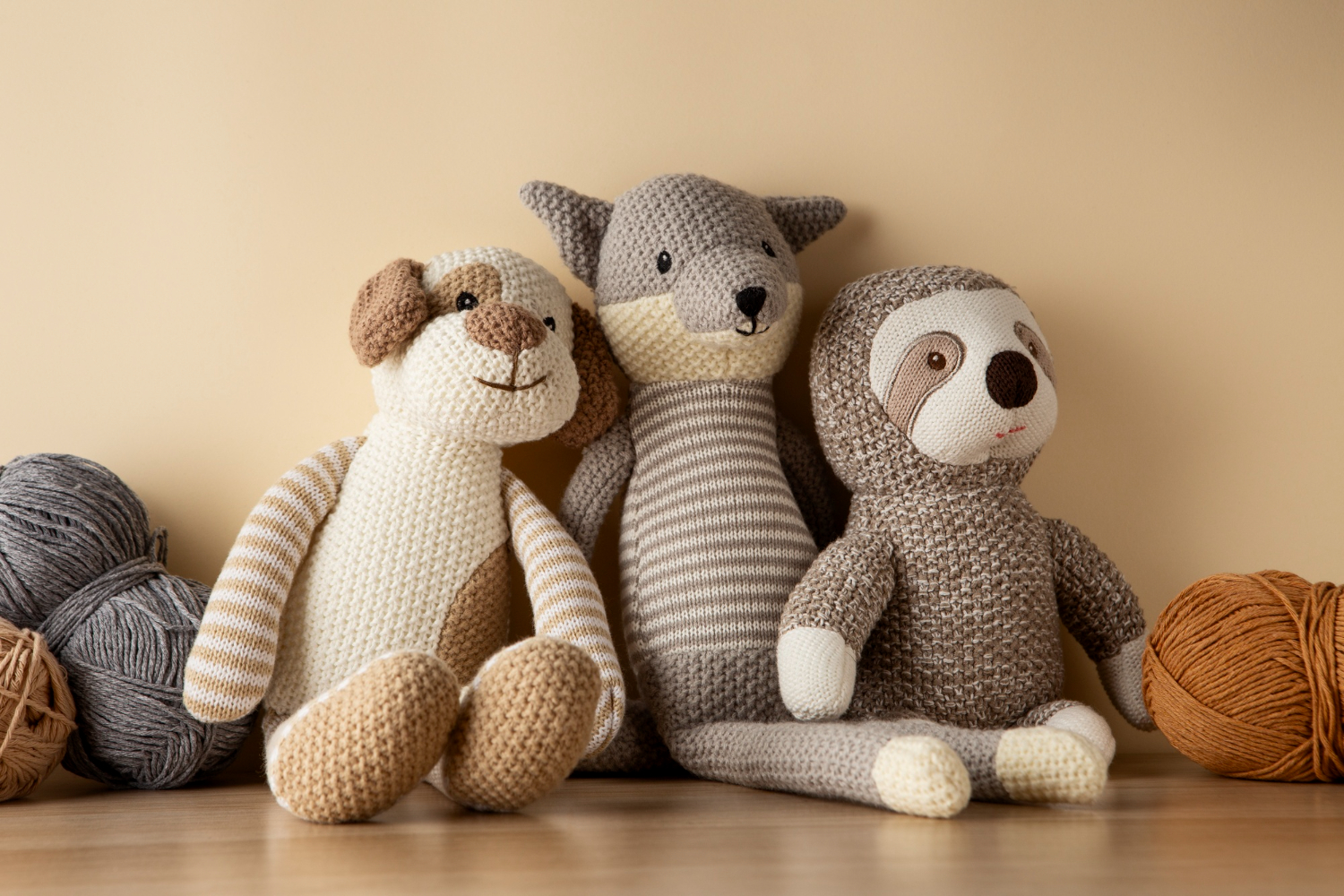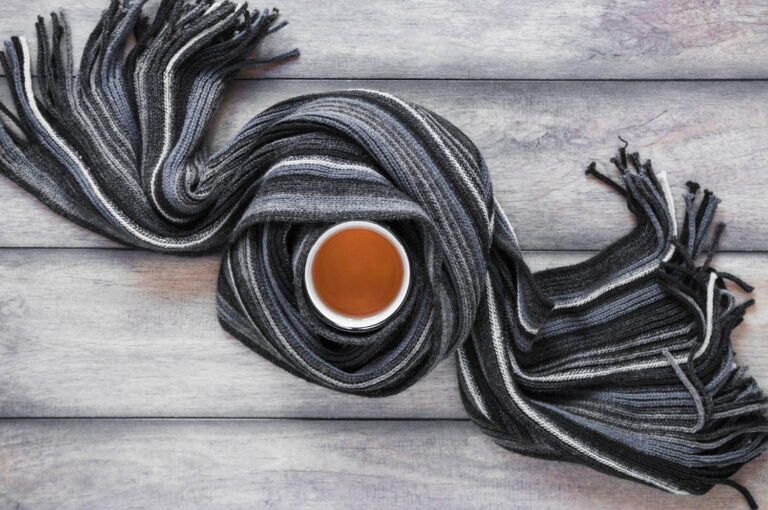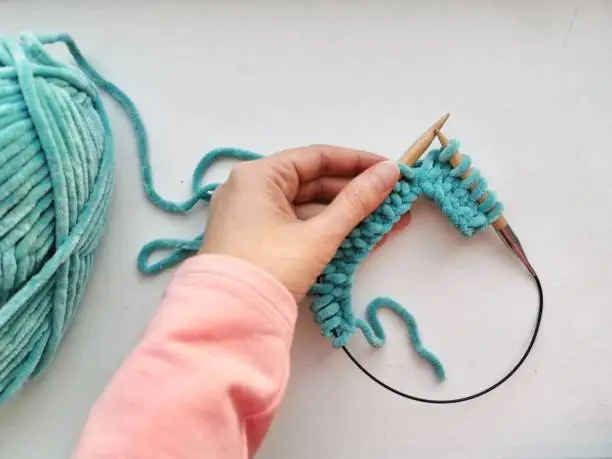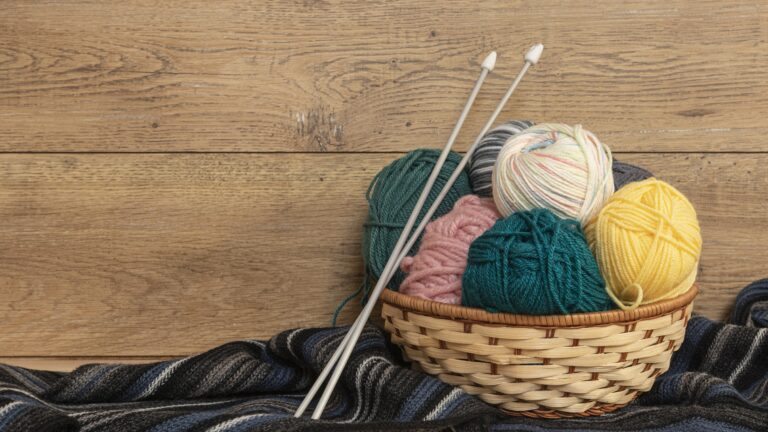Can You Knit Stuffed Animals? Quick Easy Guide
Knitting stuffed animals creates a unique and special one-of-a-kind design that has a heartwarming and creative aspect. Each loop of yarn contributes to the stuffed animal’s character, forming a soft and expressive companion that is both charming and individualistic. Unlike factory-made toys, hand-knit stuffed animals reveal the personal artistry of the maker and are a blend of skill and emotion.
Creating hand-knit stuffed animals is more than just crafting. Each stitch contributes to an excellent and nurturing practice that is both relaxing and soothing, allowing for unique and durable expression. The soft toys created through the knitting process can be of any shape, style, and size, giving the maker the freedom to turn simple yarn into splendid, life-filled creations.
These toys can be placed on a shelf for decoration, cuddled and loved during bedtime, or given as a gift. Each has a special allure that adds to its worth and wholesome magic, reminding one of devoted love and creative artistry. The question Can You Knit Stuffed Animals opens the door to a world of creativity where imagination and skill combine to produce timeless handmade treasures.
Essential Materials for Knitting Stuffed Animals

Choosing the Right Yarn
Yarn Weight DK weight or worsted weight yarn is preferred for knitted stuffed animals. This weight provides the right balance of structure and softness needed for durable toys.
Fiber Content
- Natural Fibers: Wool offers beautiful texture and natural properties, though it requires careful washing
- Synthetic Fibers: Acrylic yarn is popular due to its durability, wash ability, and wide variety of colors available
Required Tools and Equipment
Knitting Needles: Balance the yarn weight with appropriate needle sizes. Use needles 1-2 sizes smaller than recommended on the yarn label to create tighter stitches that will hold stuffing securely and maintain the toy’s shape.
Also Read: The Best Interchangeable Knitting Needles
Essential Finishing Tools
- Tapestry Needle: For assembly, seaming, and weaving in ends
- Sharp Scissors: For precise cutting of yarn and trimming loose threads
- Stitch Markers: Helpful for tracking rounds and shaping
Also Read: The Best Knitting Machines For Crafters
Stuffing and Safety Materials
Stuffing Options: Polyester fiberfill is the most popular choice, as it’s soft, retains its bounce over time, and is hypoallergenic, making it safe for children’s toys.
Facial Features (Safety Considerations)
- Safety Eyes: Plastic eyes with washer backs that secure tightly to fabric
- Embroidery Floss: Safer alternative for young children, used to stitch eyes, noses, and mouths directly onto the fabric
Also Read: How to Measure Circular Knitting Needles?
Selecting the Perfect Pattern
Choosing the right pattern is crucial for a successful knitted stuffed animal project. Patterns vary significantly in difficulty level and complexity.
Pattern Selection Guidelines
Start Simple Bears, bunnies, and snakes are excellent choices for beginners due to their basic shapes and minimal complex shaping.
Look for Quality Instructions. Choose patterns with:
- Detailed step-by-step instructions
- Clear stitch counts
- Assembly diagrams
- Gauge information
Consider Construction Method Patterns with fewer seams, which result in less assembly work and a cleaner finished appearance.
Verify Technique Requirements: Ensure the pattern utilizes techniques within your skill level, typically including knit, purl, increase, and decrease stitches, which are suitable for beginners.
Also Read: How to Read Knitting Patterns?
How to Knit a Stuffed Animal: Step-by-Step Guide
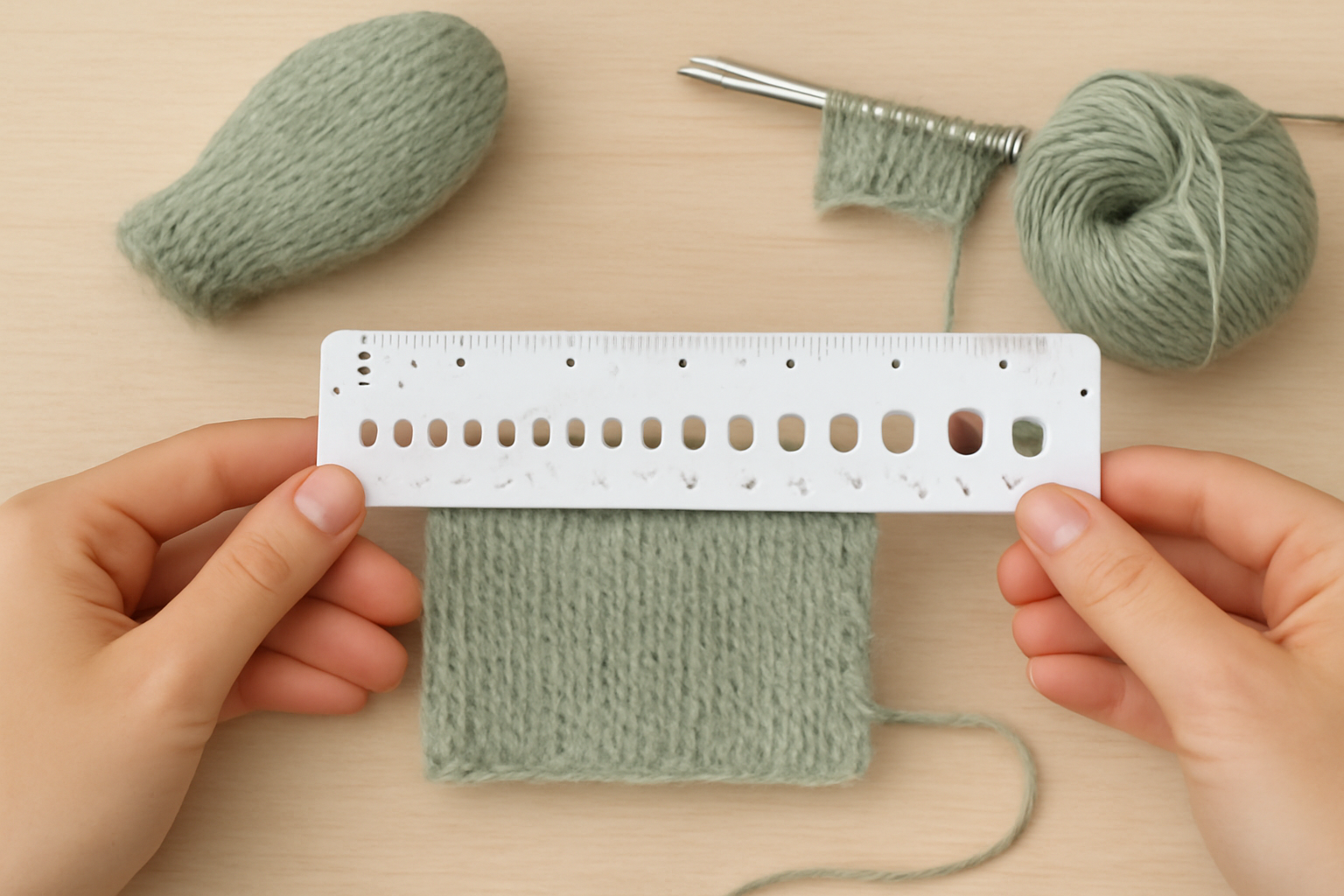
Getting Started
Gather Materials: Collect all necessary supplies, including yarn, needles, tapestry needle, scissors, stuffing, and any decorative elements.
Create a Gauge Swatch. This critical step ensures:
- Your knitting tension matches the pattern requirements
- The finished toy will be the correct size
- The fabric is tight enough to contain stuffing properly
Also Read: How to Count Rows in Knitting
Knitting Individual Components
Casting On and Initial Rows: Follow the pattern instructions carefully to begin each piece of the stuffed animal.
Essential Shaping Techniques
- Increases: Use knit front and back (kfb), make one right (m1R), or make one left (m1L) to widen fabric
- Decreases: Use knit two together (k2tog) or slip, slip, knit (ssk) to narrow fabric and create tapered shapes
Also Read: How to Add Stitches When Knitting: A Complete Guide
Construction Methods
- Knitting in the Round: Creates seamless, tubular sections using double-pointed or circular needles
- Flat Knitting: Uses straight needles, requiring seaming after completion
Maintain Consistent Tension. Uniform density and shaping require steady knitting tension throughout all pieces.
Also Read: How to Cast on Knitting with Two Needles
Assembly and Finishing
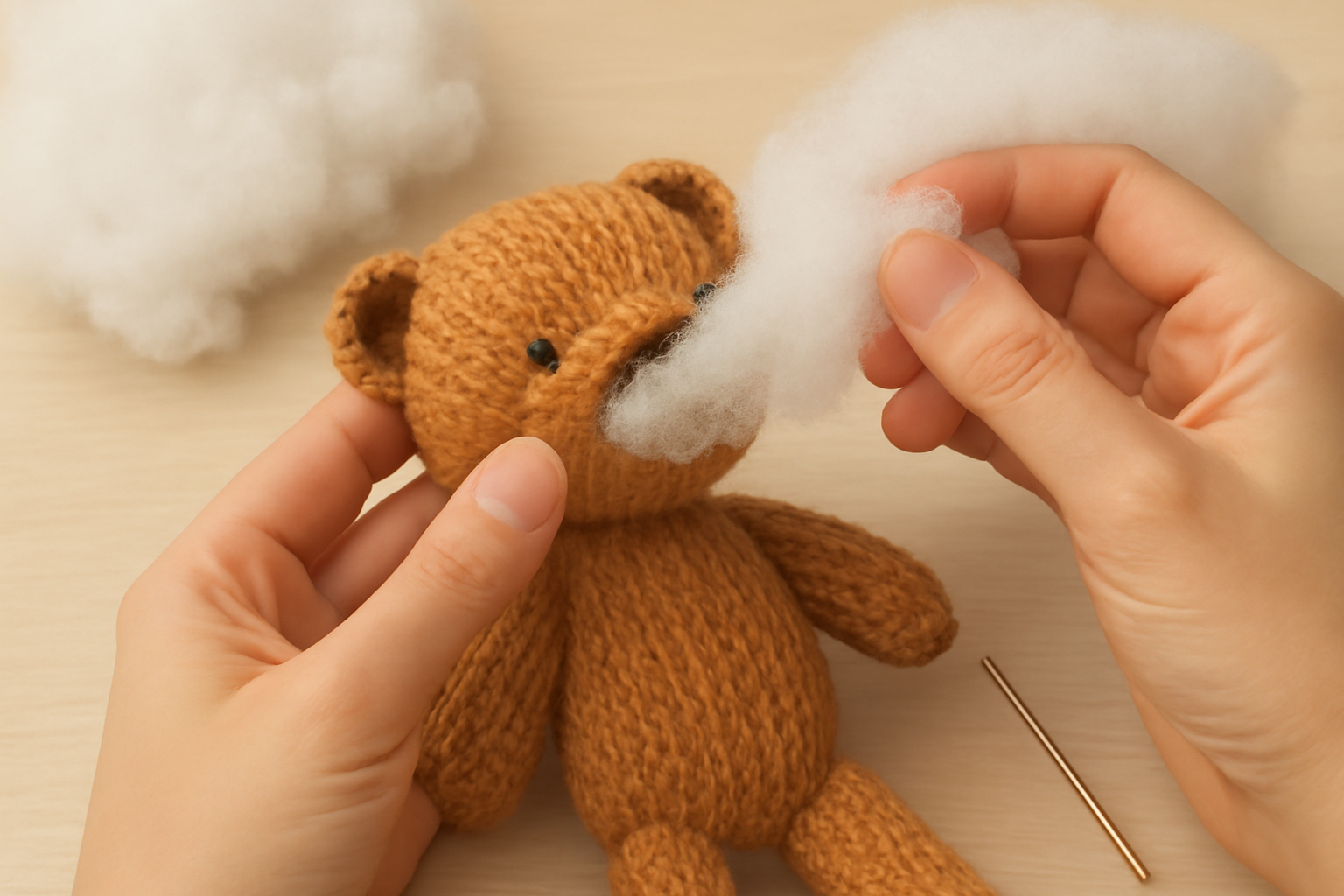
Stuffing Technique
- Use small amounts of polyester fiberfill at a time
- Distribute stuffing evenly, paying special attention to extremities
- Avoid overstuffing (causes distortion) or understuffing (creates floppy toys)
Seaming Methods
- Mattress Stitch: Ideal for knitted fabrics, providing strength and a neat appearance
- Whipstitch/Backstitch: Alternative secure stitching methods depending on design needs
Also Read: How to Pick Up Knit Stitches In Knitting? Two Methods
Adding Facial Features
- Safety Eyes: Install according to the pattern placement before closing the head
- Embroidered Features: Use simple stitches like French knots, satin stitch, and straight stitch for expressive faces
Final Details
- Add any decorative elements like spots, stripes, or accessories
- Weave in all yarn ends securely
- Perform final quality check for secure seams and balanced stuffing
Also Read: How to Finish a Knitting Project
Expert Tips for Success
Creating toys that are both durable and visually appealing requires more than basic knitting skills. Professionals emphasize attention to detail, proper material selection, and finishing techniques to ensure each piece meets high standards. The following expert tips will help you achieve consistent results and elevate your handmade creations.
Achieving Professional Results
Maintain Even Tension. Consistent stitch tension produces a smooth fabric that retains stuffing without gaps or lumps.
Choose Appropriate Yarn For Toys. For receiving heavy use, select tightly plied, machine-washable yarns, such as acrylic or superwash wool.
Master the Mattress Stitch. This nearly invisible seaming technique provides strength and a professional appearance.
Prioritize Safety. For children’s toys, embroider facial features directly onto fabric rather than using detachable parts.
Also Read: How to Fix a Dropped Stitch
Creative Inspiration and Ideas
Innovation in toy knitting comes from understanding both traditional forms and contemporary techniques. Experienced designers encourage combining classic shapes with modern textures, colors, and embellishments to produce visually striking, memorable pieces. Studying patterns from professional sources or attending workshops can provide insight into construction methods and inspire new designs, helping knitters move beyond basic motifs.
Expanding Your Imagination
Beyond Basic Animals. While bears and bunnies are classics, consider creating:
- Fantasy creatures like dragons and unicorns
- Nature-inspired animals like foxes and owls
- Whimsical characters with unique personalities
Customization Techniques
- Yarn Texture: Experiment with boucle, chenille, or specialty yarns for different effects
- Color Choices: Use realistic colors or create fantasy palettes
- Added Details: Small embroidered patches, mini accessories, or carefully placed embellishments
Also Read: How to Change Colors While Knitting? Beginners Tips
Connecting with the Knitting Community
Building connections within the knitting community is invaluable for improving skills, gaining inspiration, and staying updated on trends. Experts emphasize that active participation—both online and in person—can accelerate learning, provide access to professional-level techniques, and foster collaborations that lead to higher-quality projects. Networking with seasoned knitters also helps you troubleshoot challenges and receive constructive feedback that is difficult to get when working in isolation.
Online Resources
- Social Media Groups: Platforms like Facebook, Instagram, and TikTok host communities where knitters share projects, ask questions, and exchange tips. Participating actively can expose you to diverse styles and techniques.
- Pattern Databases: Websites like Ravelry offer an extensive collection of patterns, reviews, and project notes from experienced knitters, serving as a professional-level reference library.
- Video Tutorials: Step-by-step videos allow visual learners to master complex techniques and see expert methods in action, bridging the gap between written instructions and practical execution.
Local Communities
- Knitting Circles and Meetups: Hands-on gatherings provide direct guidance from experienced crafters and opportunities to practice advanced techniques under mentorship.
- Craft Fairs: These events showcase trends, offer inspiration, and enable pattern and tool exchanges, allowing you to observe professional-quality finishes in person.
- Local Yarn Shops: Staffed by knowledgeable crafters, these stores offer expert advice on yarn selection, troubleshooting, and project planning, which is especially helpful for ambitious or large-scale projects.
Frequently Asked Questions
Conclusion
Knitting stuffed animals is an enriching endeavor that combines creativity with the joy of crafting something meaningful. From choosing the right yarn and pattern to mastering stitches and bringing unique characters to life, each step is a deeply personal artistic journey. Rather than simply producing objects, this craft creates soft companions that embody the maker’s love and care.
Whether made as gifts, decorative pieces, or personal projects, each knitted toy showcases charming craftsmanship through delightful textures, vivid colors, and distinct characters that come to life on the knitting needles. The skill of knitting invites everyone to create their own special toys, turning simple yarn into treasured companions that will be cherished for years to come.
Also Read: How to Knit a Hat with Straight Needles? Beginner’s Guide

